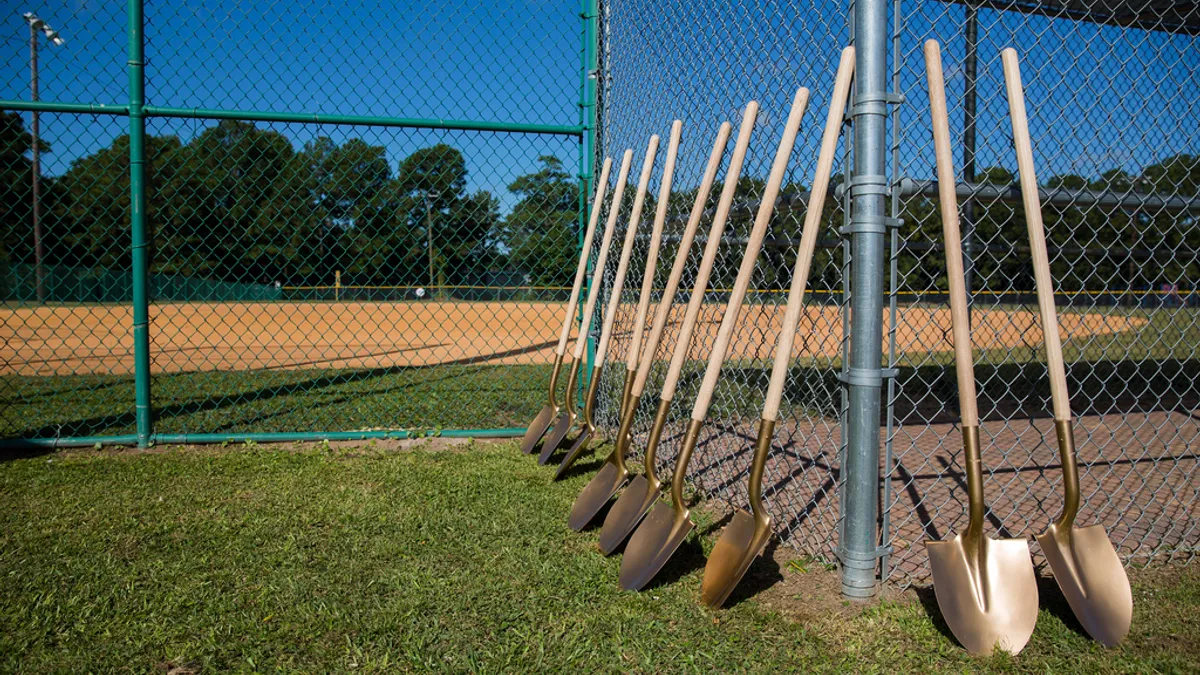Dive Brief:
- Prince George’s County, Maryland, officials say they’re going to use public-private partnerships (P3s) to help address an $8.5 billion backlog of public school construction and maintenance projects. County Executive Angela Alsobrooks said using a P3 model would save about $180 million by turning over duties to the private sector, and it would allow the county to build 18 schools in seven years, The Washington Post reported.
- The announcement comes after several complaints about the district's school facilities — 40% of its 209 schools are about 60 years old, and overcrowding, broken air conditioning and moldy, aging buildings have caused students to get sent home early in the past, The Post reported.
- The Maryland General Assembly passed a bill establishing a framework for how the state would contribute to the program, but county officials will have to wait until next year to seek funding. Regardless of state actions, the county will invest $25 million to $30 million annually into school construction projects for the next 30 years.
Dive Insight:
Prince George's County — Maryland's second-largest school district and one of the nation's 25 largest — could start work on as many as seven schools this fall using a P3 model, and officials believe schools will be built 14 years faster using a P3 model and for up to 20% cheaper. In the midst of safety issues, as well as other factors that could get in the way of learning, kick-starting this construction in a potentially faster and cheaper way will better conditions for the more than 130,000 students who are enrolled in the district's schools.
Aging buildings and a lack of air conditioning are two issues that have surfaced in several other schools — both in Maryland and across the nation. But school funding has remained a top issue among administrators, and many districts don't have the money they need to revamp their school buildings. President Donald Trump's proposed Fiscal Year 2020 budget poses cuts to school funding, and without this federal assistance, the state and local funding gaps that exist between wealthy and less wealthy areas — which, unlike their peers, may have a harder time affording these arguably necessary costs — will likely persist.
Several states have budget surpluses this year, but administrators are forced to choose whether to use the extra funds for raising teacher pay — a hot-button issue that's spurred many to walk out of schools in protest — or other initiatives. Another option is putting the money away. At any rate, school funding remains an issue, leading educators to look to options such as P3s for assistance.
K-12 administrators can look to higher education for inspiration, as P3s have long been used at colleges and universities as a means to outsource construction or service-related needs — and they've recently grown to encompass academics. But university officials recommend asking a number of questions before engaging in this type of relationships, and K-12 leaders can do the same. Among these asks: What's going to change, who will be the point person and are the school's core values preserved?















